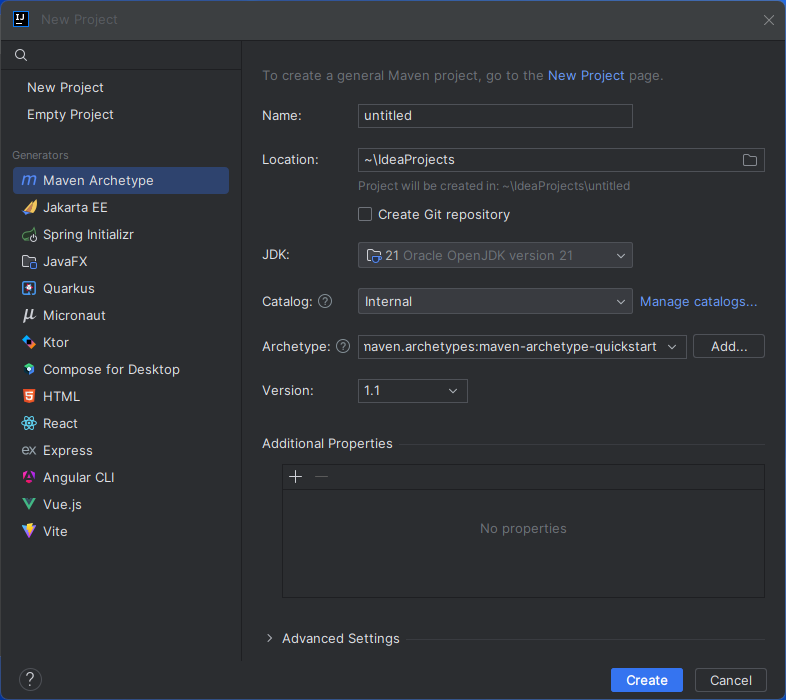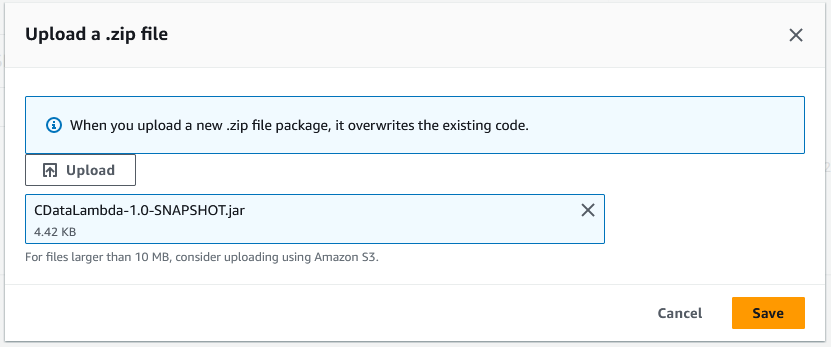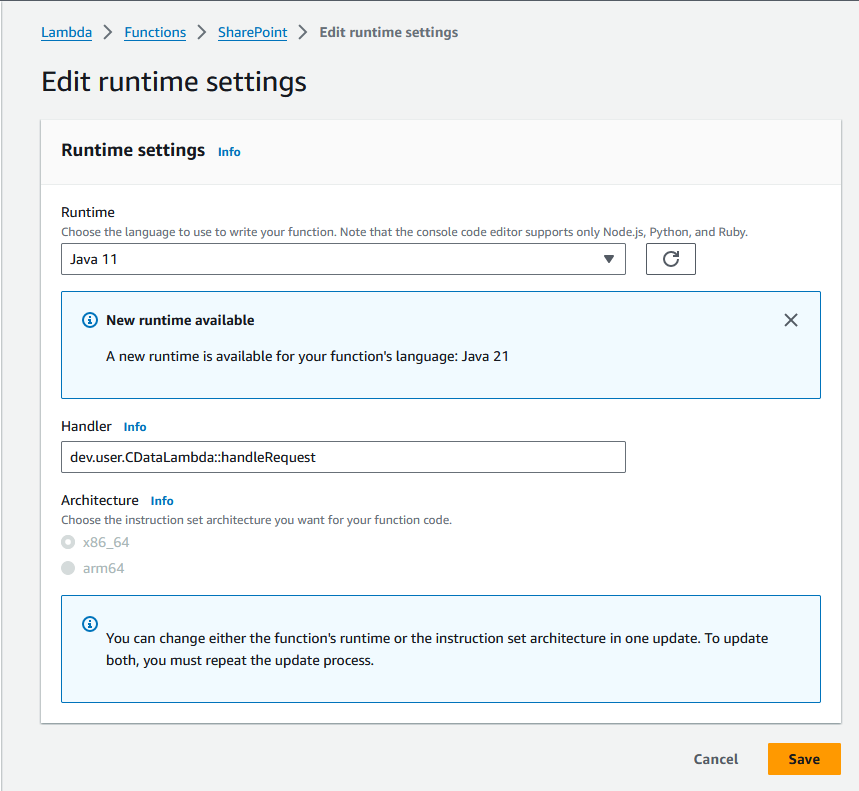Discover how a bimodal integration strategy can address the major data management challenges facing your organization today.
Get the Report →Access Live WooCommerce Data in AWS Lambda (with IntelliJ IDEA)
Connect to live WooCommerce data in AWS Lambda using IntelliJ IDEA and the CData JDBC Driver to build the function.
AWS Lambda is a compute service that lets you build applications that respond quickly to new information and events. AWS Lambda functions can work with live WooCommerce data when paired with the CData JDBC Driver for WooCommerce. This article describes how to connect to and query WooCommerce data from an AWS Lambda function built with Maven in IntelliJ.
With built-in optimized data processing, the CData JDBC Driver offers unmatched performance for interacting with live WooCommerce data. When you issue complex SQL queries to WooCommerce, the driver pushes supported SQL operations, like filters and aggregations, directly to WooCommerce and utilizes the embedded SQL engine to process unsupported operations client-side (often SQL functions and JOIN operations). In addition, its built-in dynamic metadata querying allows you to work with and analyze WooCommerce data using native data types.
Gather Connection Properties and Build a Connection String
Download the CData JDBC Driver for WooCommerce installer, unzip the package, and run the JAR file to install the driver. Then gather the required connection properties.
WooCommerce supports the following authentication methods: one-legged OAuth1.0 Authentication and standard OAuth2.0 Authentication.
Connecting using one-legged OAuth 1.0 Authentication
Specify the following properties (NOTE: the below credentials are generated from WooCommerce settings page and should not be confused with the credentials generated by using WordPress OAuth2.0 plugin):
- ConsumerKey
- ConsumerSecret
Connecting using WordPress OAuth 2.0 Authentication
After having configured the plugin, you may connect to WooCommerce by providing the following connection properties:
In either case, you will need to set the Url property to the URL of the WooCommerce instance.
NOTE: To use the JDBC driver in an AWS Lambda function, you will need a license (full or trial) and a Runtime Key (RTK). For more information on obtaining this license (or a trial), contact our sales team.
For assistance constructing the JDBC URL, use the connection string designer built into the WooCommerce JDBC Driver. Double-click the JAR file or execute the jar file from the command line.
Fill in the connection properties (including the RTK) and copy the connection string to the clipboard.
Use the following Maven command from the project's root folder to install JAR file in the project. Within the Maven project's pom.xml file, add AWS and the CData JDBC Driver for WooCommerce as dependencies (within the <dependencies> element) using the following XML. For this sample project, we create two source files: CDataLambda.java and CDataLambdaTest.java.
Replace the body of the handleRequest method with the code below. Be sure to fill in the connection string in the DriverManager.getConnection method call. Once you build the function in Intellij, you are ready to deploy the entire Maven project as a single JAR file.
Download a free, 30-day trial of the CData JDBC Driver for WooCommerce and start working with your live WooCommerce data in AWS Lambda. Reach out to our Support Team if you have any questions.
Built-in Connection String Designer
java -jar cdata.jdbc.woocommerce.jar

Create a Project in IntelliJ

Install the CData JDBC Driver for WooCommerce JAR File
mvn install:install-file -Dfile="PATH/TO/CData JDBC Driver for WooCommerce 20XX/lib/cdata.jdbc.woocommerce.jar" -DgroupId="org.cdata.connectors" -DartifactId="cdata-woocommerce-connector" -Dversion="23" -Dpackaging=jar
Add Dependencies
<dependency>
<groupId>com.amazonaws</groupId>
<artifactId>aws-lambda-java-core</artifaceId>
<version>1.2.2</version> <!--Replace with the actual version-->
</dependency>
<dependency>
<groupId>org.cdata.connectors</groupId>
<artifactId>cdata-woocommerce-connector</artifaceId>
<version>23</version> <!--Replace with the actual version-->
</dependency>
Create an AWS Lambda Function
Lambda Function Definition
import java.sql.Connection;
import java.sql.DriverManager;
import java.sql.ResultSet;
import java.sql.ResultSetMetaData;
import java.sql.SQLException;
import java.sql.Statement;
String query = "SELECT * FROM " + input;
// Set your AWS credentials
String awsAccessKey = "YOUR_AWS_ACCESS_KEY";
String awsSecretKey = "YOUR_AWS_SECRET_KEY";
String awsRegion = "YOUR_AWS_REGION";
// AWS S3 Configuration
AmazonS3 s3Client = AmazonS3ClientBuilder.standard()
.withRegion(awsRegion)
.withCredentials(new AWSStaticCredentialProvider(new BasicAWSCredentials(awsAccessKey, awsSecretKey)))
.build();
String bucketName = "MY_AWS_BUCKET";
String oauthSettings = "S:3//"+ bucketName + "/OAuthSettings.txt";
String oauthConnection = "InitiateOAuth=REFRESH;" +
"OAuthSettingsLocation=" + oauthSettings = ";"
try {
Class.forName("cdata.jdbc.woocommerce.WooCommerceDriver");
cdata.jdbc.woocommerce.WooCommerceDriver driver = new cdata.jdbc.woocommerce.WooCommerceDriver();
DriverManager.registerDriver(driver);
} catch (SQLException ex) {
} catch (ClassNotFoundException e) {
throw new RuntimeException(e);
}
Connection connection = null;
try {
connection = DriverManager.getConnection("jdbc:cdata:woocommerce:RTK=52465...;Url=https://example.com/; ConsumerKey=ck_ec52c76185c088ecaa3145287c8acba55a6f59ad; ConsumerSecret=cs_9fde14bf57126156701a7563fc87575713c355e5; " + oauthConnection + "");
} catch (SQLException ex) {
context.getLogger().log("Error getting connection: " + ex.getMessage());
} catch (Exception ex) {
context.getLogger().log("Error: " + ex.getMessage());
}
if(connection != null)
{
context.getLogger().log("Connected Successfully!\n");
}
ResultSet resultSet = null;
try
{
//executing query
Statement stmt = connection.createStatement();
resultSet = stmt.executeQuery(query);
ResultSetMetaData metaData = resultSet.getMetaData();
int numCols = metaData.getColumnCount();
//printing the results
while(resultSet.next())
{
for(int i = 1; i <= numCols; i++)
{
System.out.printf("%-25s", (resultSet.getObject(i) != null) ? resultSet.getObject(i).toString().replaceAll("\n", "") : null );
}
System.out.print("\n");
}
}
catch (SQLException ex)
{
System.out.println("SQL Exception: " + ex.getMessage());
}
catch (Exception ex)
{
System.out.println("General exception: " + ex.getMessage());
}
return "query: " + query + " complete";
Deploy and Run the Lambda Function



Free Trial & More Information





